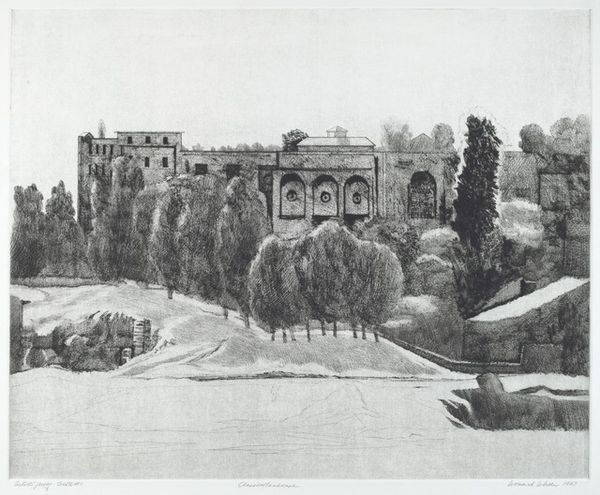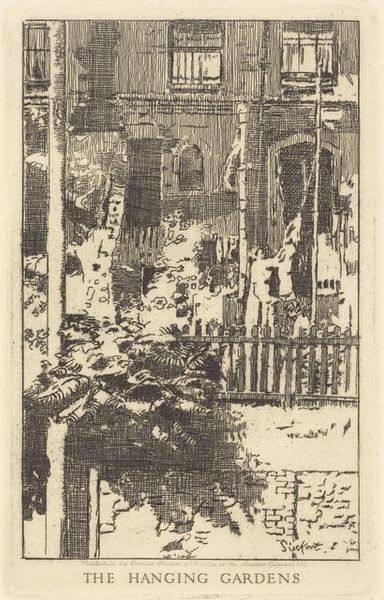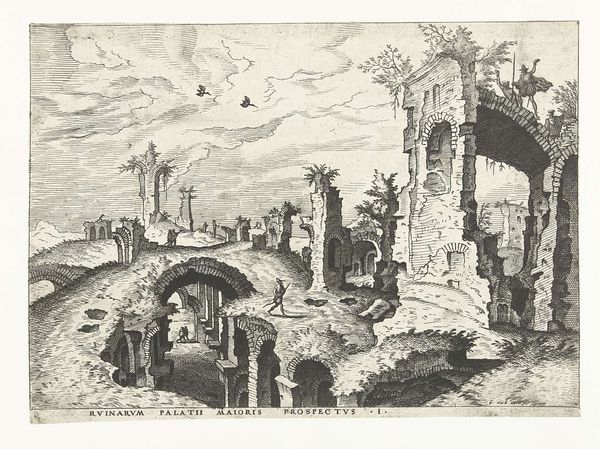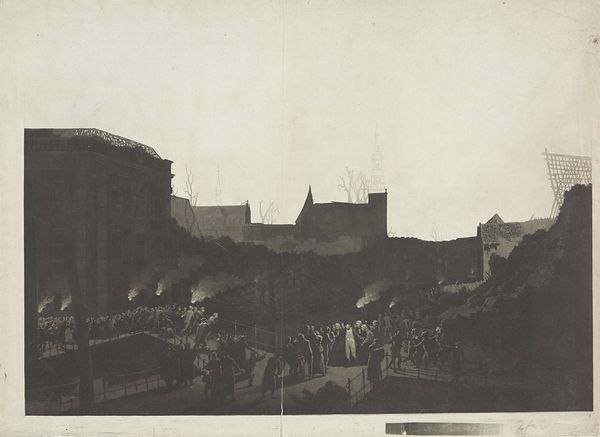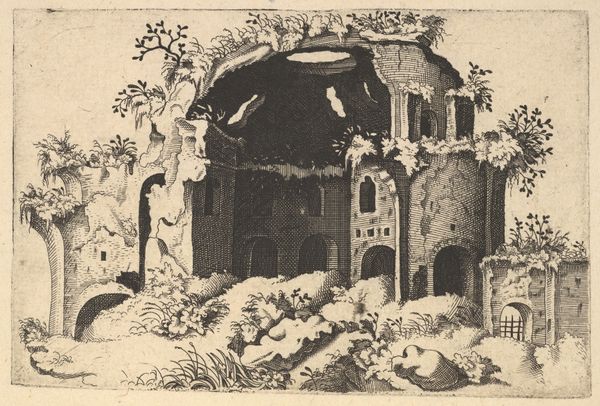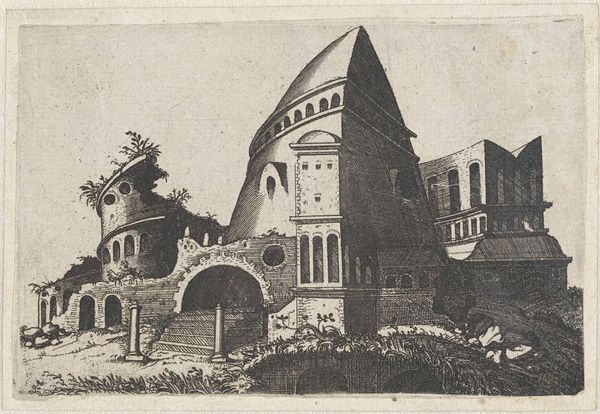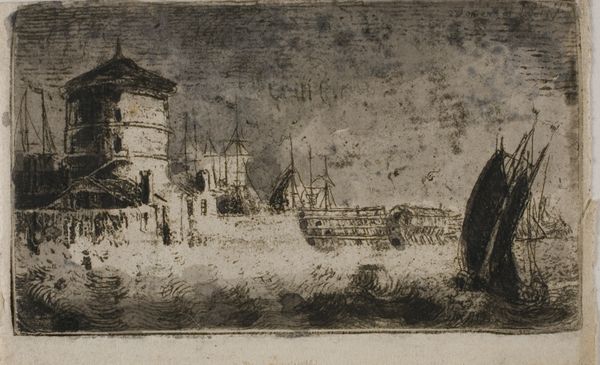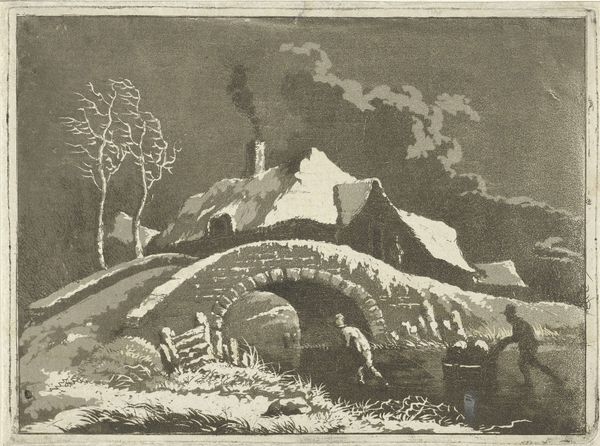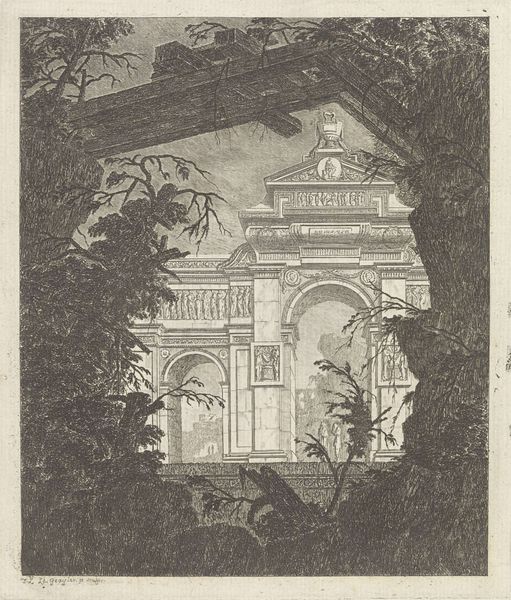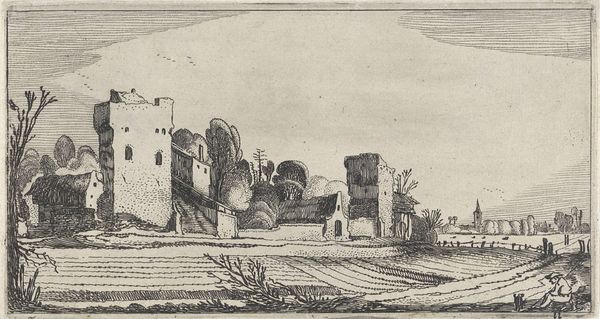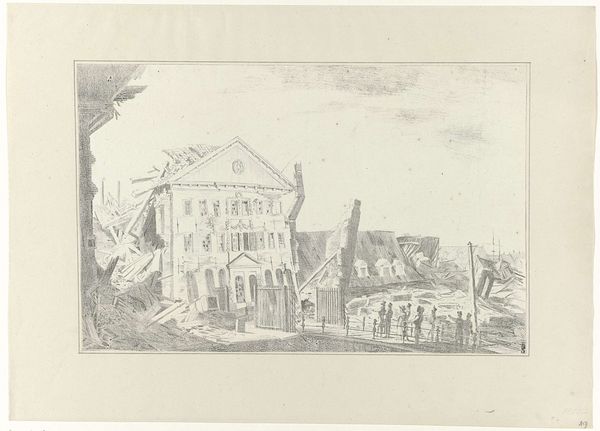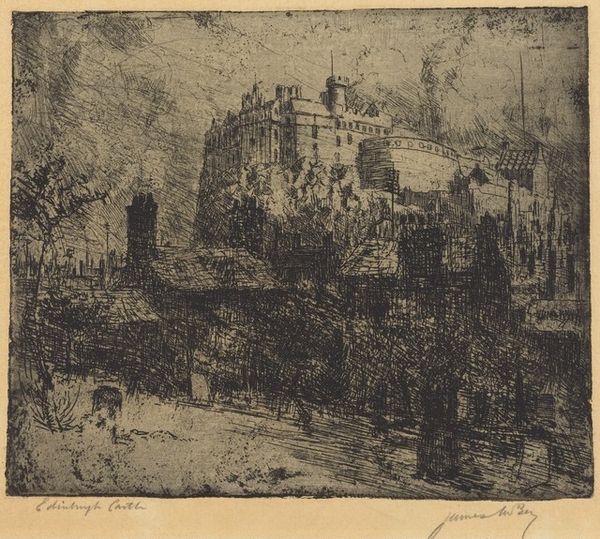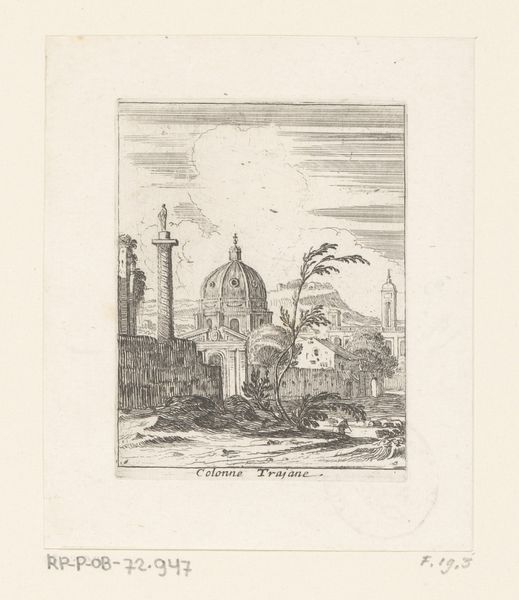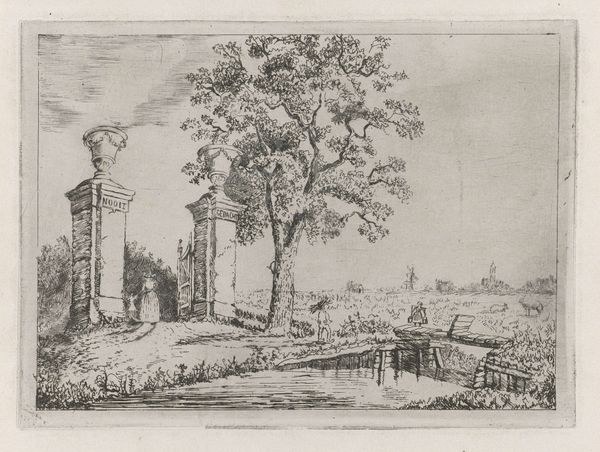
print, engraving
# print
#
landscape
#
mannerism
#
history-painting
#
engraving
Dimensions: height 112 mm, width 171 mm
Copyright: Rijks Museum: Open Domain
Editor: This engraving, "Landscape with overgrown ruins and travellers", created around 1560 by Lambertus Suavius, has such a haunting quality. The ruins feel both ancient and fragile. How do you interpret this work? Curator: It’s powerful, isn’t it? Suavius places these figures within a landscape dominated by decay, which wasn't just an aesthetic choice. Consider the period. The 16th century witnessed massive religious and political upheaval. How might the crumbling architecture speak to a loss of faith in established orders, or anxiety about the future? What do you think of the contrast between the travellers and the decaying buildings? Editor: It makes them seem insignificant, like their journeys are dwarfed by history, and the inevitability of decline. The detail is amazing, too. All the plants growing on the ruins… Curator: Precisely! This detail, executed with Mannerist flair, points to nature reclaiming what civilization has lost. It encourages us to question ideas of progress and the lasting power of human endeavors, something especially relevant given Europe’s colonial expansion during this time. It pushes you to reflect, doesn't it, on the cyclical nature of power? What kind of power are the figures hoping to access in that light? Editor: It makes me think about how much of our present is built on the ruins of the past, literally and figuratively. We really can't escape our history. Curator: Exactly. Art like this demands that we actively engage with the past. By interrogating its complexities and considering diverse perspectives, we are then better able to challenge inequalities of the present. Editor: I hadn't considered it that way before. I'm seeing much more depth now. Curator: Art can offer different avenues toward understanding and change. It gives insight into our cultural narratives and belief systems and also prompts new ways to engage with history.
Comments
No comments
Be the first to comment and join the conversation on the ultimate creative platform.
